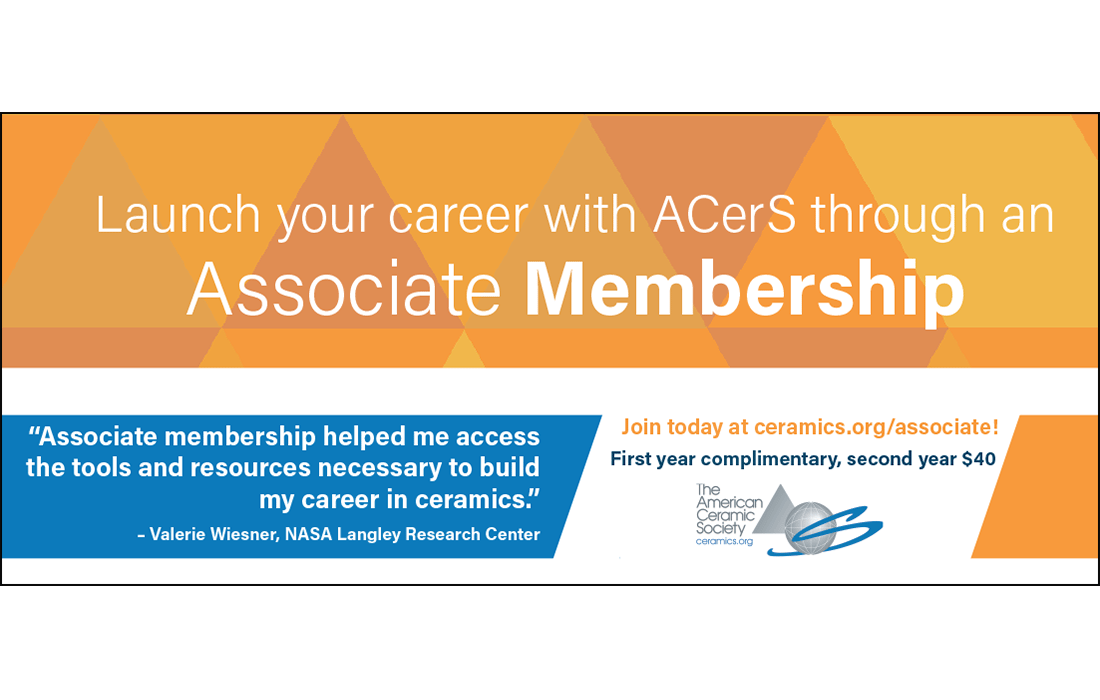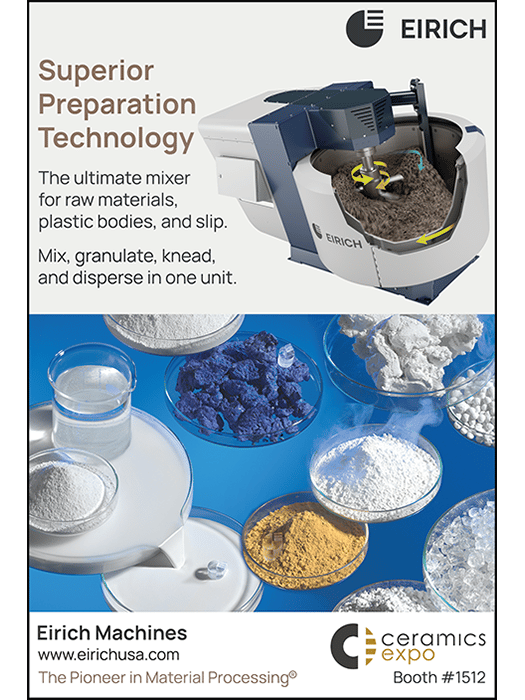journal highlights
Jonathon Foreman
ACerS journals managing editor
Ceramics to improve manufacturing
With superior mechanical, thermal, and chemical properties compared to other types of materials, ceramics have been used as tooling, containers, insulation, and more for manufacturing for more than a century. For example, the high harness of carbides and diamond make them excellent materials for cutting tools, while the high-temperature mechanical and chemical stability of corundum and mullite lead to their use as containers and insulation in smelting and other extreme processing environments.
Even with these well-established applications, research continues to enhance the desirable properties and minimize the limitations. The American Ceramic Society is a leading publisher of articles encompassing all aspects of ceramics for manufacturing, from new materials to performance testing to manufacturing of end products. We have assembled a topical collection of recent articles highlighting the use of contemporary research techniques to address the expanding needs for better performance and improved manufacturability.
ADVERTISEMENT
The articles in this collection fall generally into three categories:
- Studies on cutting tools, including explorations of materials, structures, fabrication techniques, and use of modeling and simulation.
- Materials for refractories, including new raw materials and their effects on processing and performance, along with applying advanced characterization methods to refractory raw materials.
- Processing parameters for grinding media and the effects of conditions and additives on performance.
Exemplifying the types of articles included in the first category is “Enhancing cutting performance of Ti(C,N)-based cermet tools on nodular cast iron by incorporating high-entropy carbide.” Nodular cast iron is an excellent material for mechanical components, such as gears and camshafts, but it is difficult to machine due to poor thermal conduction. Materials with high hardness, toughness, and wear resistance are needed to form tools with the cutting efficiency needed to minimize heat transfer.
High-entropy materials contain multiple metallic elements of varying atomic sizes that appear to be stabilized by highly disordered structures. This stability improves mechanical and thermal properties, including hardness and toughness. The authors of the article found that tools that incorporate high-entropy carbides had, for the most part, higher hardness, toughness, strength, and thermal conductivity. The tool with the best properties had a tool life that was nearly double the baseline tool without the high-entropy carbides.

Setup for testing the cutting performance and wear characteristics of Si3N4–SiCw–HfB2 ceramic cutting tools.
Credit: Gu et al., Journal of the American Ceramic Society

Setup for testing the cutting performance and wear characteristics of Si3N4–SiCw–HfB2 ceramic cutting tools.
Credit: Gu et al., Journal of the American Ceramic Society
Regarding articles in the second category, refractory manufacturers and researchers are highly focused on reducing energy consumption, not only in the manufacturing of their products but also for their customers during usage. Refractory parts feature intricate compositions, comprising coarse and fine refractory particles, binders, additives, and more.
Calcium aluminate cements (CACs), which are widely used as binders in refractories, require substantial amounts of natural resources and energy to produce while emitting high amounts of CO2. The article “Design, characterization, and incorporation of geopolymer binders in refractory ceramic compositions” compared kaolin-based geopolymer and nanosilica-containing liquids formulations to CACs. While their initial results showed limited success, one geopolymer binder formulation demonstrated potential as an alternative to CAC.
The articles in the third and final category, among the most important parameters that manufacturers need to consider for grinding media are wear and cost. Excessive wear on grinding media both drives up cost and introduces impurities, which is particularly important when processing materials into powders for downstream use.
In the article “Processing of alumina grinding media using scandia as a sintering aid,” the authors focused on improving wear to produce media for high-purity fine powders. Though scandia is a relatively expensive material, the performance improvements and potential longevity from reduced wear can easily justify the added cost. Fortunately, the authors found sufficient gains by adding between 0.01 wt.% and 0.1 wt.% scandia.
The topical collection “Ceramics to Improve Manufacturing” can be found on the ACerS Publication Central hub. Click on the “Collections” menu and select “Topical Collections” from the drop down. You will see this collection along with others created over the past few years. You can also directly access this collection here.
xx
About the author:
Doug Thurman is past president (2022–2023) of AACCM and president of Sunrock Ceramics Company (Broadview, Ill.). Contact Thurman at dthurman@sunrockceramics.com.
In memory of Jeffery Brundage, AACCM president
Jeffery (Jeff) Brundage, current president of AACCM as of January 2024, died peacefully early in the morning of Feb. 10, 2024, at the age of 71. He was a member of AACCM since its inception and long-time ACerS member.
Brundage supported the ceramics industry in past positions with ILC Space Systems (Clearlake, Texas); General Ceramics National Beryllia Division, now American Beryllia Inc. (Haskel, N.J.); and Superior Technical Ceramics (St. Albans, Vt.). He started his own business, Critical Services LLC (Swanton, Vt.), and served as CEO of Lamda Advanced Materials LLC (Alfred, N.Y.) at the time of his death.
Brundage made many dear friends during his 40 years solving challenges within the ceramics industry. He will be deeply missed.

